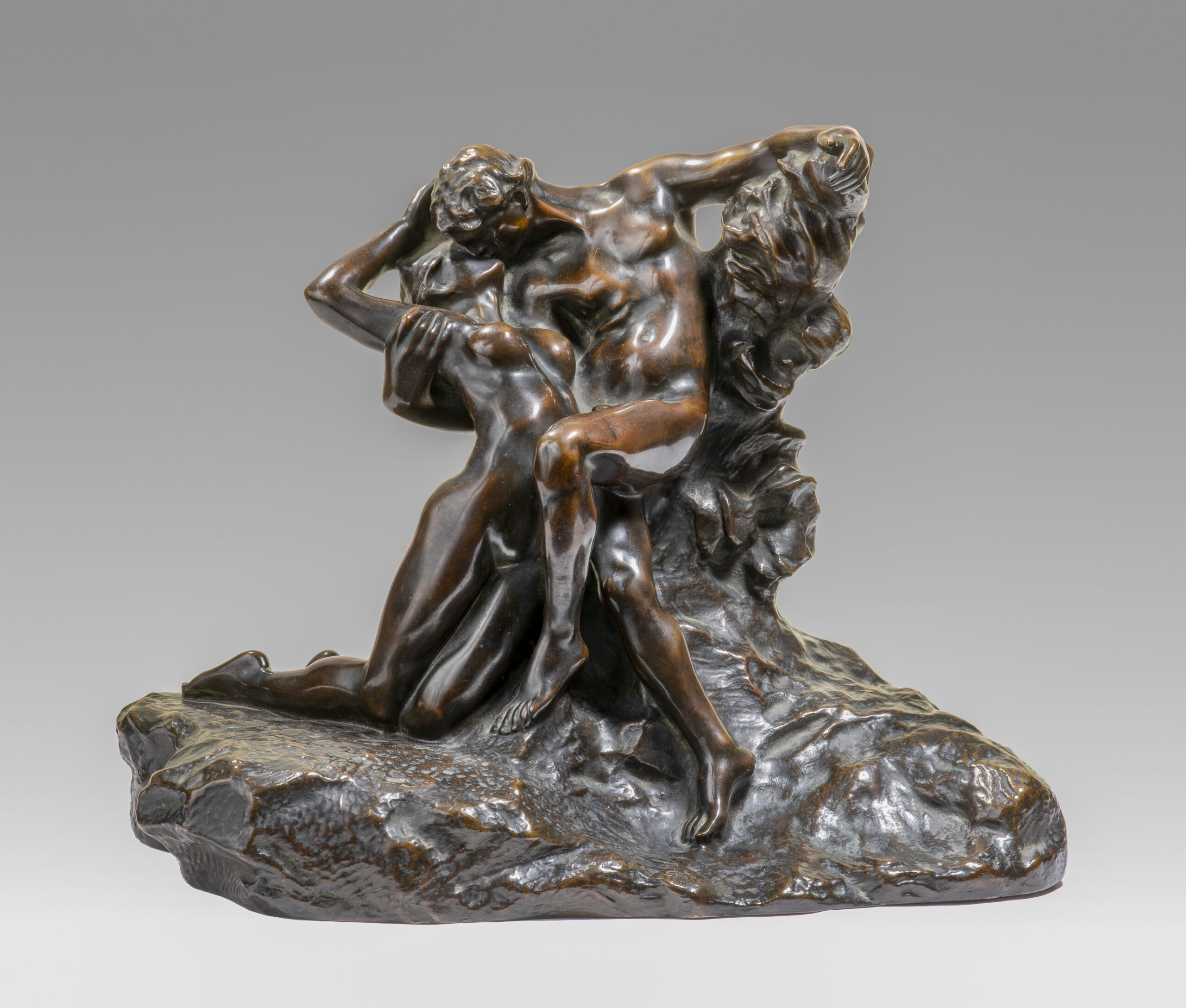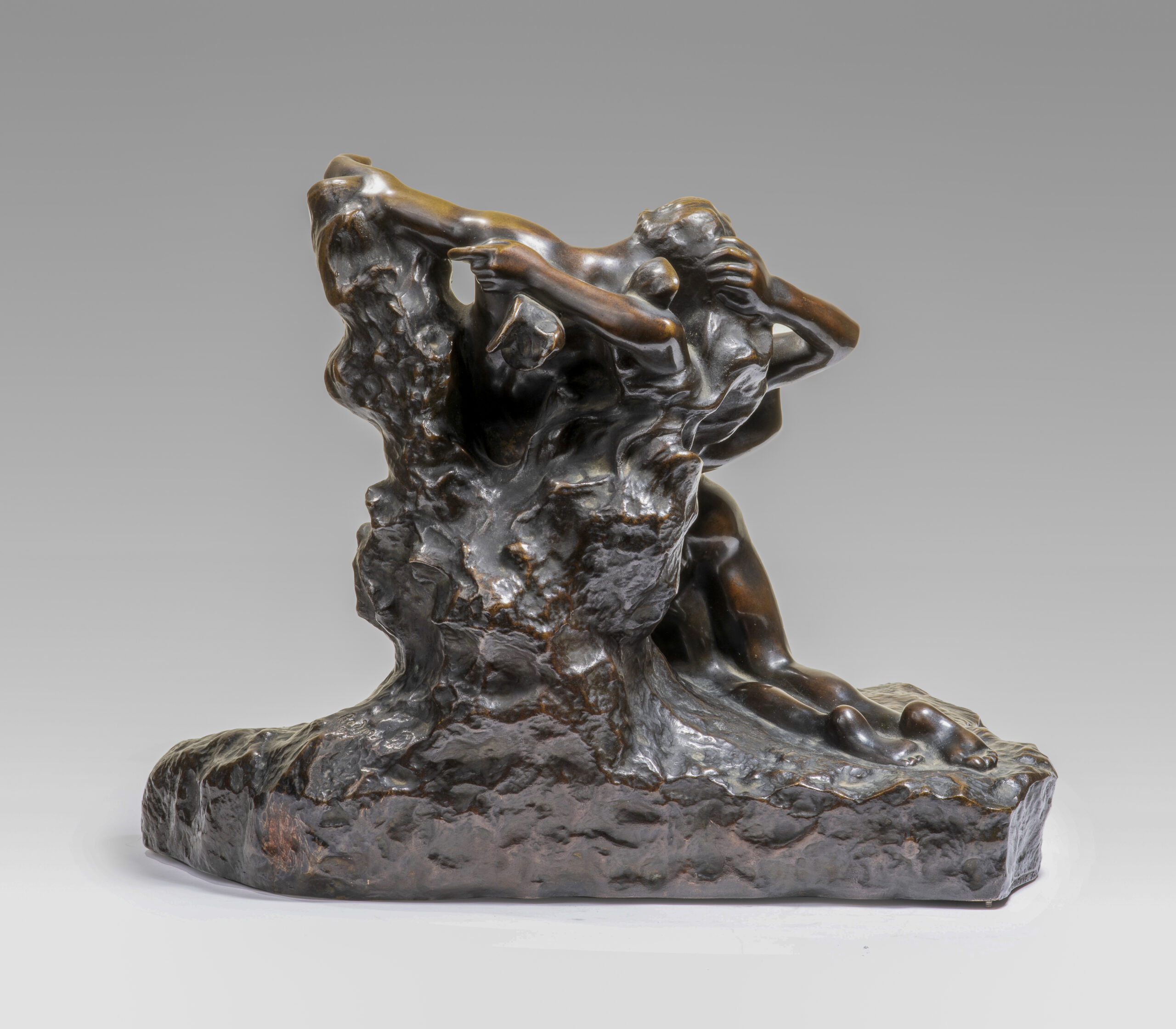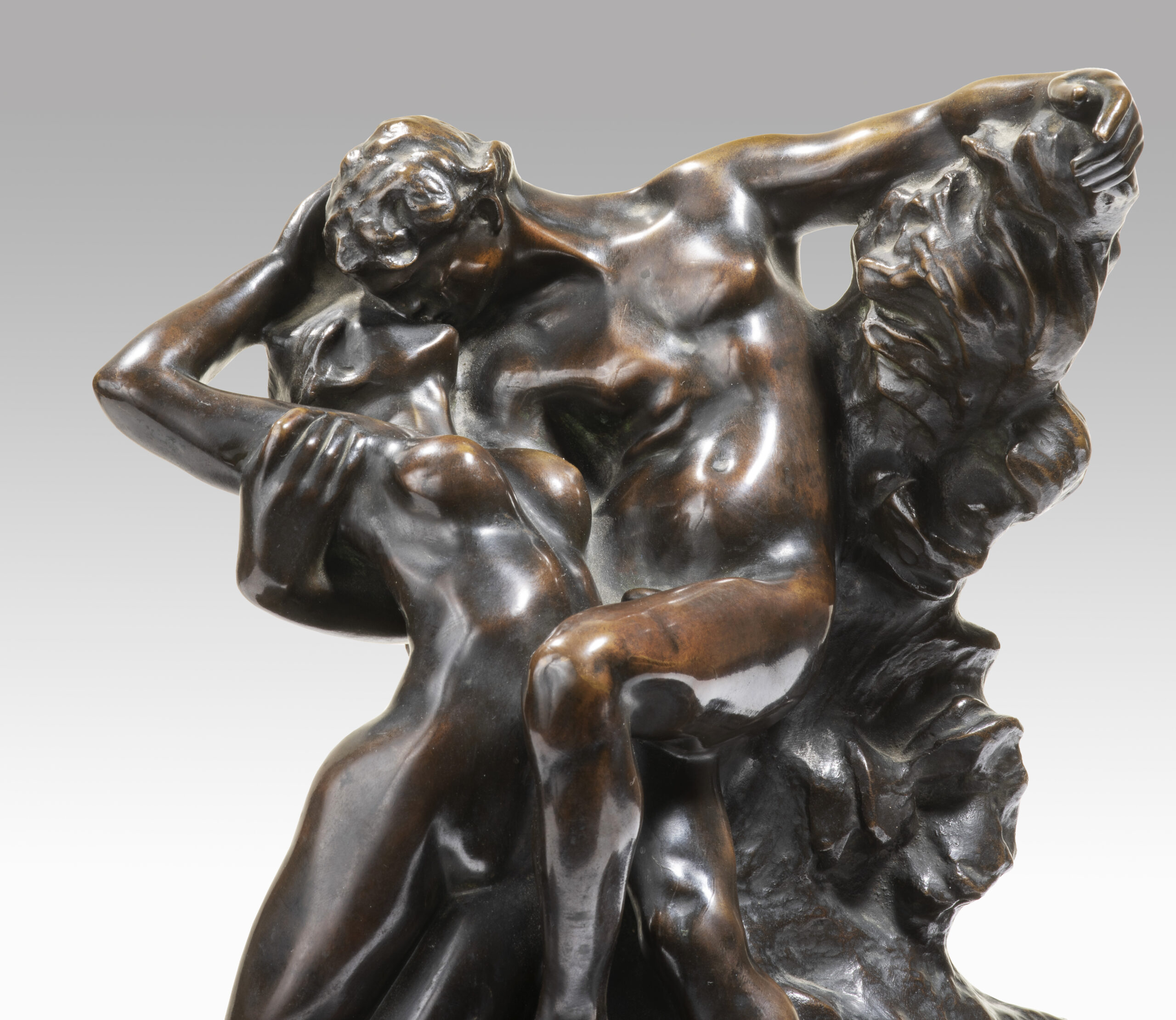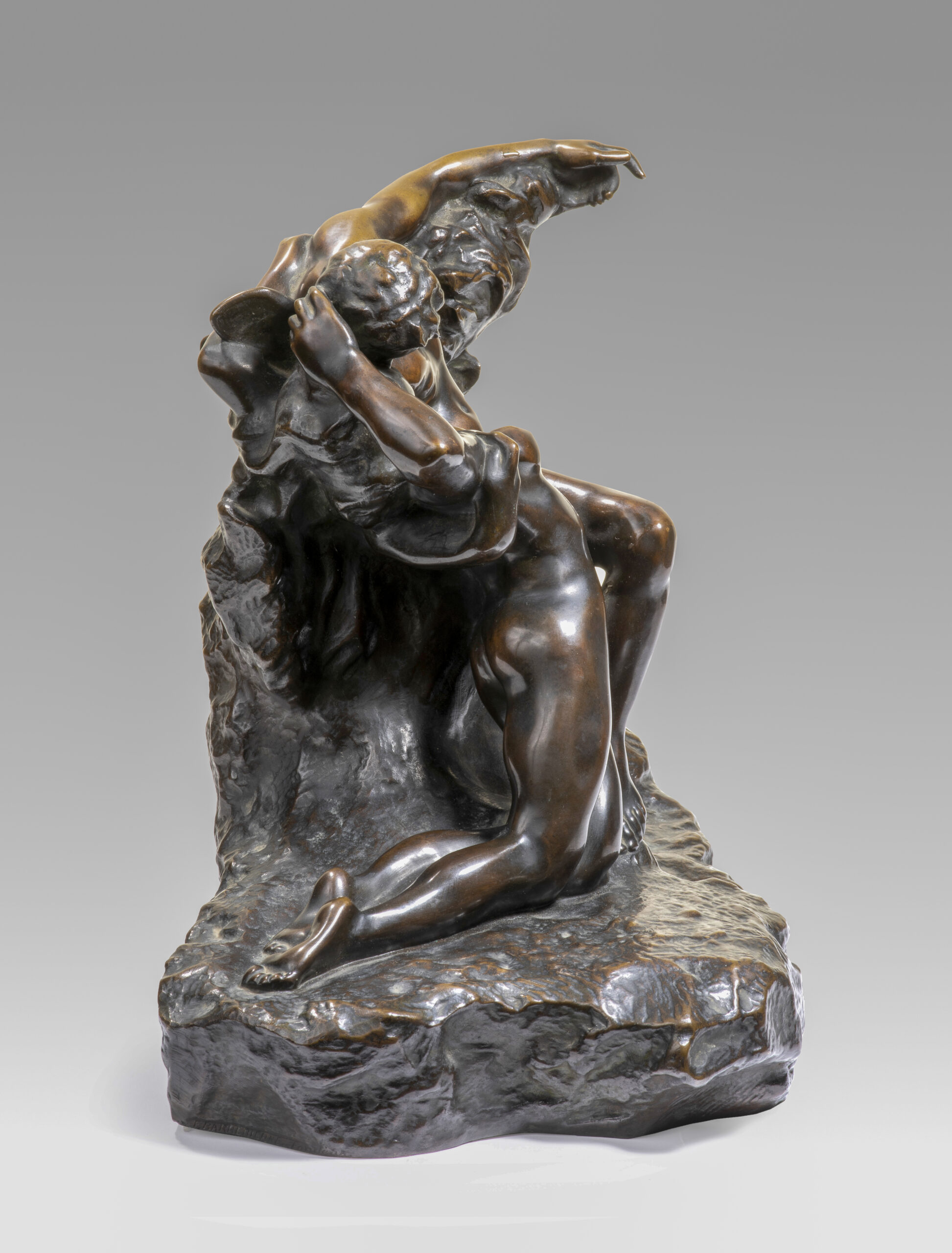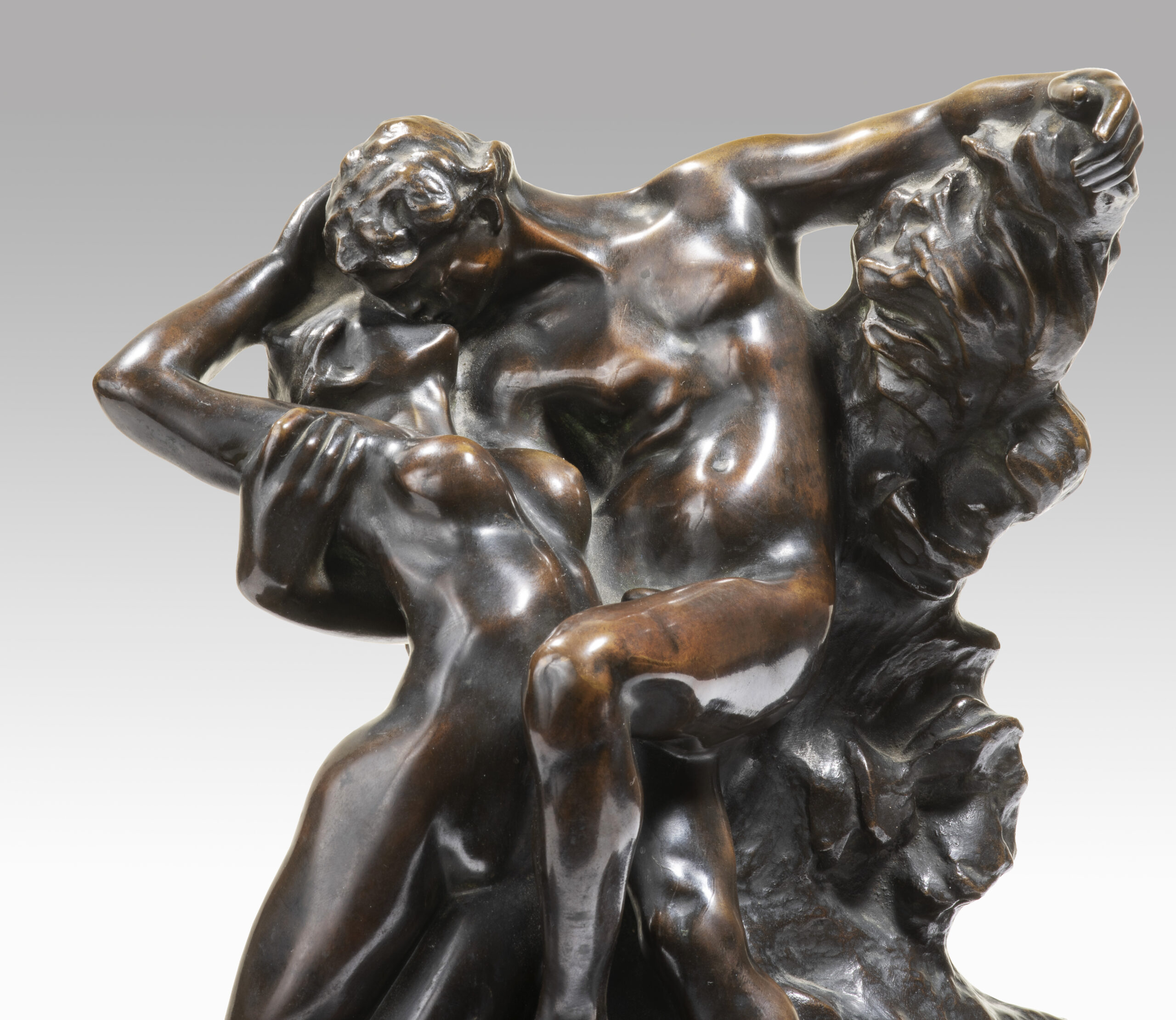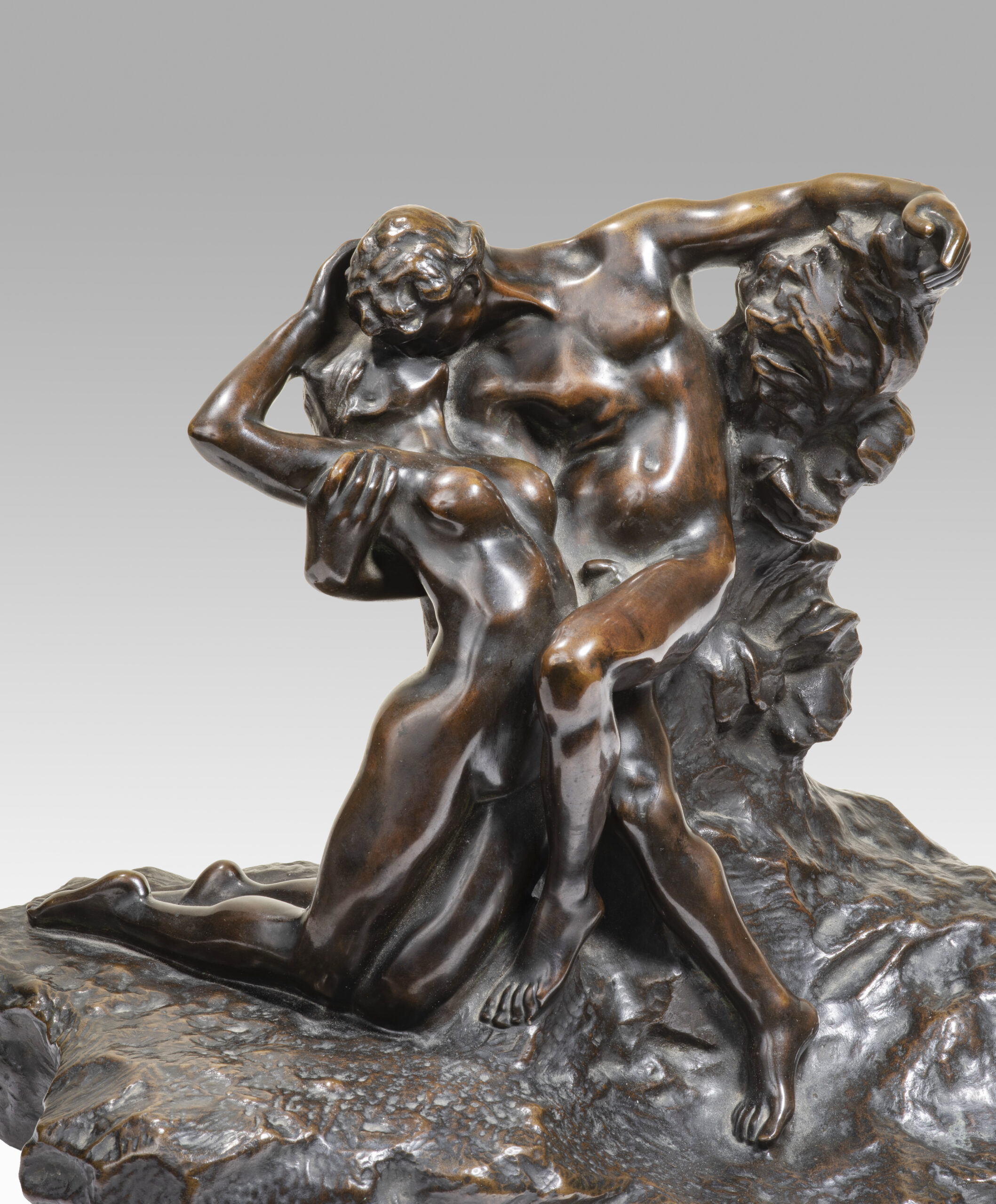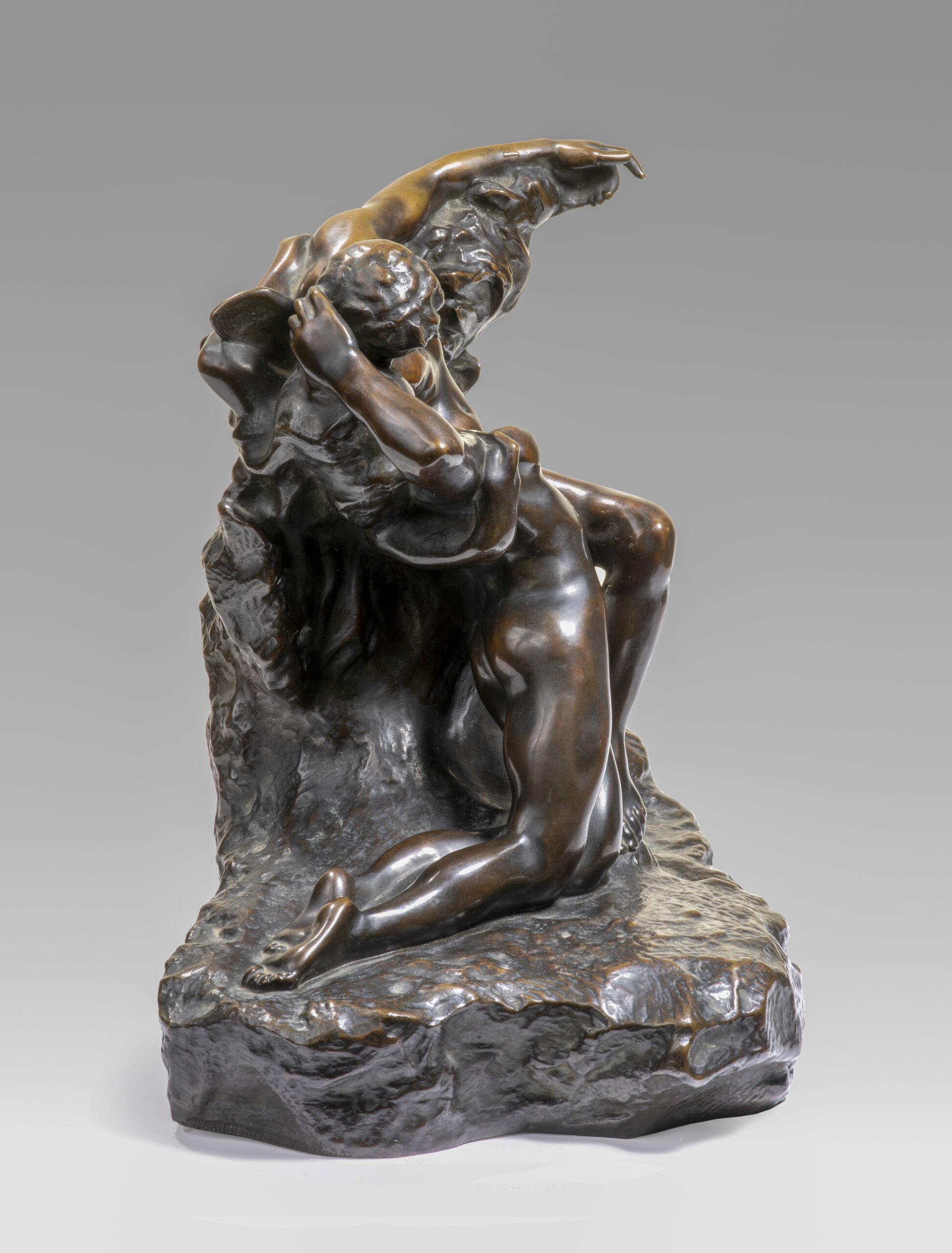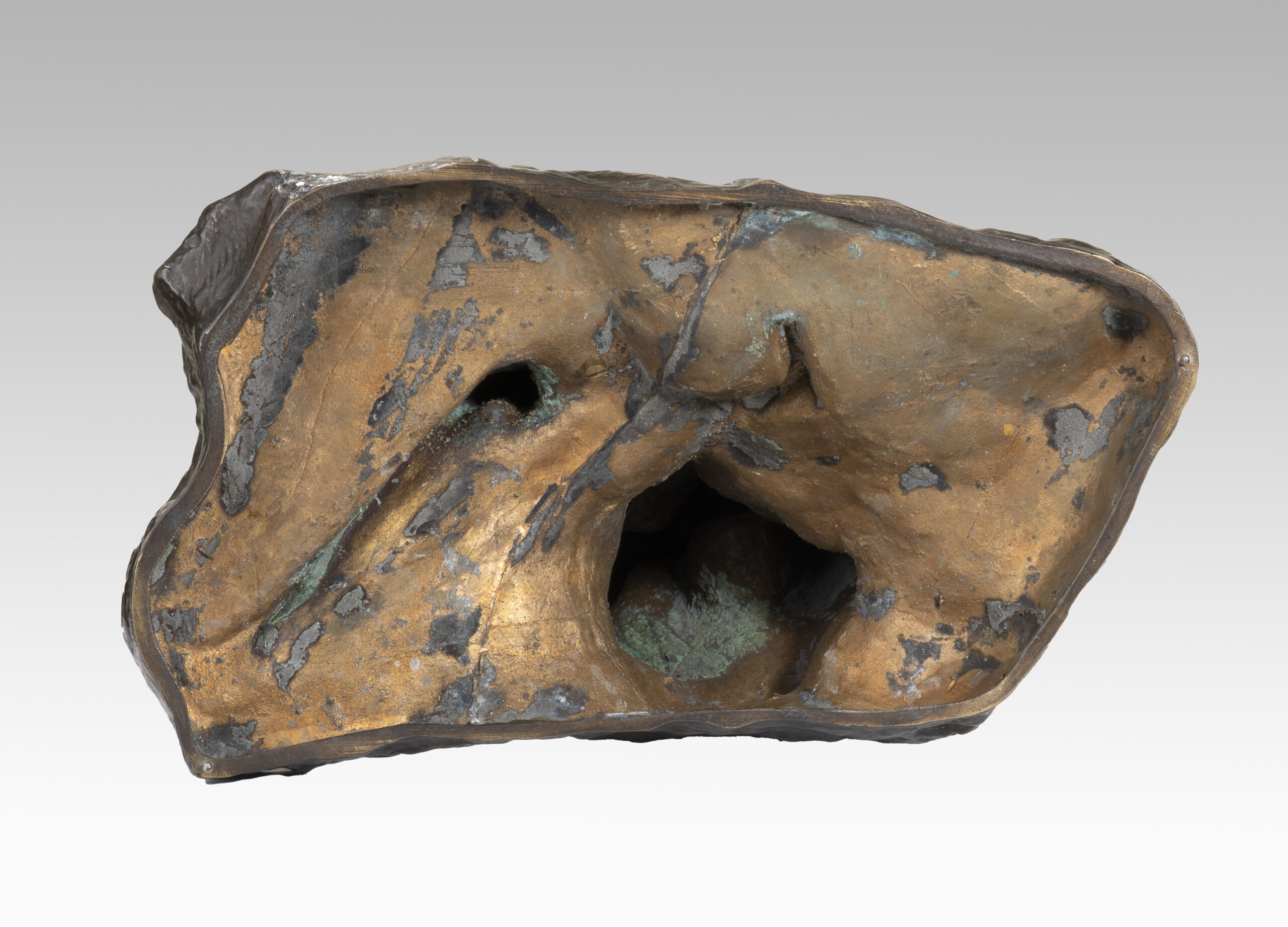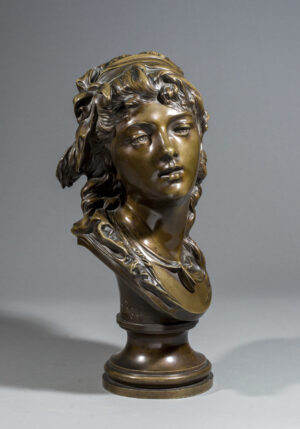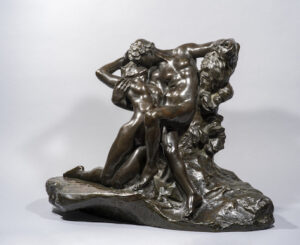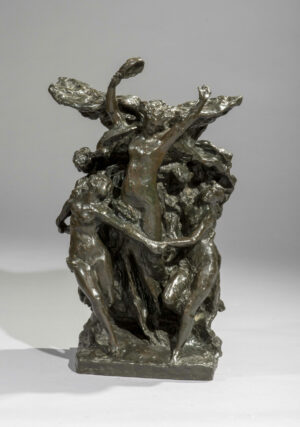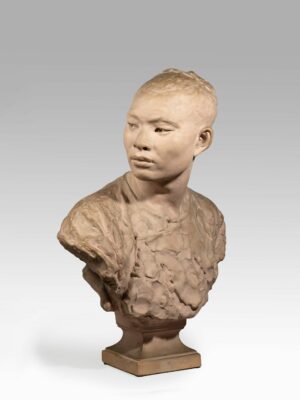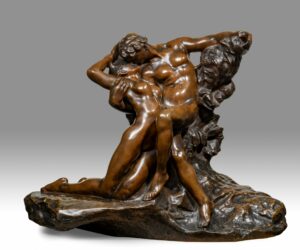Description
Evoking, by its graceful movement, the 18th century sculpture, ‘The Eternal Spring’, a major success, was translated into bronze several times and in four different sizes. Ten copies in marble were also produced. The sculpture was created during the period of intense work on the ‘Gates of Hell’, but the subject being too delicate was not to be included in it. Exhibited at the 1898 Salon, it met with great commercial success. Like ‘The Kiss’, of which it is a kind of variant, it conveys the bliss of two young lovers, most probably inspired by the passionate and tormented ten-year relationship between the master and his student lover Camille Claudel. In this amorous fusion, the man opens wide his torso while the female figure (taken from the work ‘Torso of Adele’ inspired by Adele Abruzzesi, one of Rodin’s favourite models) amorously arches her back . This masterpiece of sculpture admirably expresses erotic love, with the two figures literally melting into one another. This statement of Rodin could very well be applied to the artist himself: ‘I believe that the body is the only true garment of the soul, through which its radiance shines’ (Rodin to Paul Gsell, 1907).
On 6 July 1898, Auguste Rodin agreed with the Leblanc-Barbedienne foundry to a ten-year renewable contract for both ‘The Kiss’ and ‘The Eternal Spring’, in several sizes for each of them and in unlimited quantity. A plaster model obtained from a marble cast was initially entrusted to the Leblanc-Barbedienne foundry, which had small-scale versions made, using the principle of Achille Collas’ mechanical reduction machine, of which Barbedienne held the patent. The edition of ‘The Eternal Spring’, second version, initially came in three sizes, 25” (64 cm), 15,7” ( 40 cm) and 9,8” (25 cm), to which was added a small-scale version of 20,4” (52 cm) in height in 1900. From 63 to 69 copies of the 4th reduction (8,5” 25 cm in height) have been inventoried, pro- duced between 1898 and 1918. Our proof, in terms of its internal assembly, details and internal and external marks, is entirely consistent with the cast of the Barbedienne edition, which ran from 1898 to 1918. The letters «VL» struck twice on the inside near the assembly of the base indicate a workshop active around 1905-1910. Proofs produced by Barbedienne usually have an ink number inscribed on the inside, but it often fades over time. A 20% commission was paid to Rodin for this sale as part of his royalties, the original invoices being archived at the musée Rodin.

